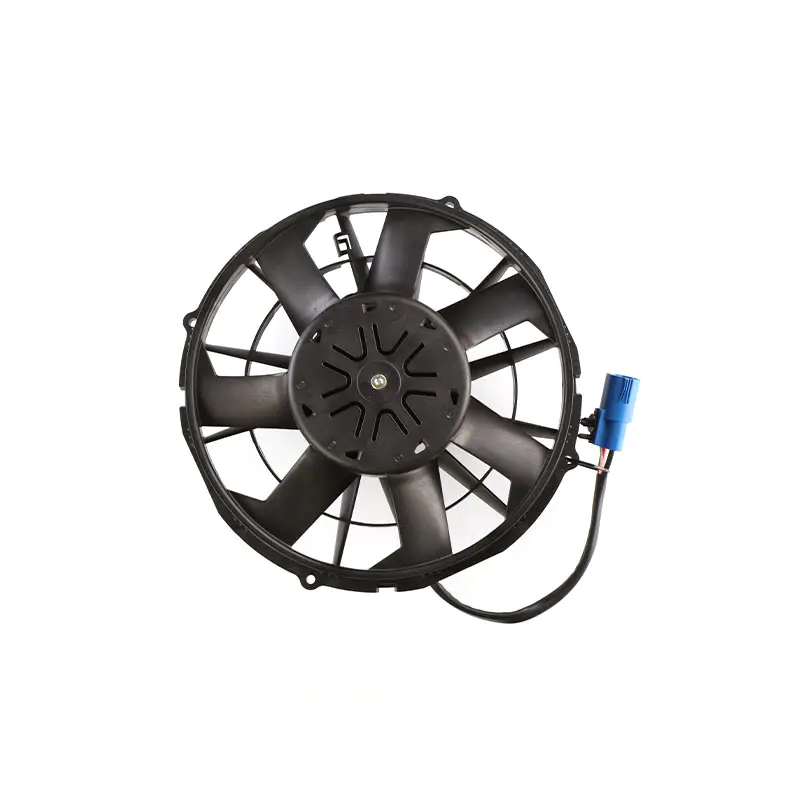Contact Us
Your email address will not be published. Required fields are marked *
What Are the Key Differences Between Automotive DC Centrifugal Fans and Standard Fans?
Dec 26, 2025How Can DC Cooling Fan Motors Enhance Performance in High-Temperature Environments?
Dec 18, 2025What Is an Automotive DC Centrifugal Fan and How Does It Work?
Dec 11, 2025How Can DC Cooling Fan Motors Improve Energy Efficiency in Industrial Applications?
Dec 04, 2025What Affects the Durability and Lifespan of DC Axial Fans?
Nov 27, 2025What Determines Pressure Performance in EC Forward-Tilting Centrifugal Fans?
Nov 20, 2025What Factors Influence Energy Consumption in DC Axial Fans?
Nov 13, 2025How Do EC Forward-Tilting Centrifugal Fans Improve Airflow Stability?
Nov 06, 2025How Do DC Axial Fans Enhance Thermal Management Efficiency?
Oct 30, 2025Why DC Axial Fans Are Revolutionizing Industrial Cooling Systems?
Oct 23, 2025DC Axial Fans Explained: Efficiency, Durability, and Performance
Oct 16, 2025DC Axial Fans vs AC Fans: Which One Suits Your Needs?
Oct 09, 2025
1. Choose the right fan type and structure
The working principle of Centrifugal fans is based on Newton's third law, that is, action and reaction. Through the rotating impeller, the fan converts mechanical energy into kinetic energy of airflow, thereby realizing gas transportation. When choosing the right fan type and structure, the following key factors need to be considered:
1. Air volume and air pressure requirements
Air volume refers to the volume of gas passing through the fan per unit time, while air pressure represents the ability of the fan to overcome resistance and transport gas. Different application scenarios have different requirements for air volume and air pressure. In large industrial plants, high air volume may be required to quickly replace indoor air; while in the smoke exhaust system of high-rise buildings, high air pressure is required to ensure that the smoke can be discharged smoothly. When selecting, the air volume and air pressure requirements of the application scenario should be clarified first.
2. Installation space and structural requirements
The size and shape of the installation space have an important impact on the selection of fans. In a limited space, it may be necessary to choose a compact fan design or adopt a special installation method (such as wall-mounted, ceiling-mounted, etc.). The structural requirements of the fan should also be taken into account, such as whether special properties such as explosion-proof, corrosion-resistant, and high-temperature resistant are required.
3. Noise and energy efficiency
Noise and energy efficiency are important indicators for measuring fan performance. In application scenarios that require low noise, fans with low noise designs should be selected, such as using noise reduction measures such as silencers and sound insulation materials. Energy efficiency is also a factor that cannot be ignored. Efficient fans can provide stable air volume and air pressure output while reducing energy consumption.
2. Optimize the design of Custom Centrifugal Fans according to specific application scenarios
After selecting the appropriate fan type and structure, how to further optimize the design of Custom Centrifugal Fans to meet the needs of specific application scenarios has become a more detailed and complex task.
1. Optimization of impeller design
The impeller is the core component of the fan, and its design directly affects the performance and efficiency of the fan. By optimizing the shape, number of blades and angle of the impeller, the air volume and air pressure output of the fan can be significantly improved, while reducing noise and energy consumption. The use of streamlined blade design can reduce the resistance of the airflow on the blades and improve the efficiency of the fan; while increasing the number of blades can increase the air volume of the fan to a certain extent.
2. Optimization of casing design
The casing is another important component of the fan, and its design has an important impact on the airflow distribution and noise level of the fan. By optimizing the shape and size of the casing, the flow state of the airflow inside the fan can be improved, and the eddy and turbulent phenomena can be reduced, thereby improving the efficiency and stability of the fan. The use of sound insulation materials and sound-absorbing structures can reduce the noise level of the fan.
3. Selection of motor and transmission system
The motor and transmission system are the power source of the fan, and their performance directly affects the operating efficiency and reliability of the fan. When selecting a motor, its power, speed, efficiency and other parameters should be considered to ensure that the fan can operate stably and provide the required air volume and air pressure. The selection of the transmission system should also fully consider factors such as its transmission efficiency, stability and maintenance cost.
4. Application of intelligent control systems
With the development of intelligent technology, more and more fans are beginning to use intelligent control systems for precise control. Through sensors that monitor the operating status and environmental parameters of the fan in real time, the intelligent control system can automatically adjust the fan speed and air volume output to achieve the goals of energy saving and stable operation. The intelligent control system can also provide functions such as fault warning and remote monitoring to reduce operation and maintenance costs and improve operation and maintenance efficiency.

Your email address will not be published. Required fields are marked *
Zhejiang Nicety Electric Machinery Co., Ltd. specializes in the production of four series of products: condenser electronic fan, radiator (water tank) fan, blower, and air conditioner assembly. Professional production American, European, Japanese, Korean And Domestic brand DC automotive axial fans.
Email: [email protected] / [email protected]
Tel: +86-0578-7125439 / +86 181 0658 9231
Address:No. 98, Guangda Street, Jinsha Industrial Zone, Longquan City, Zhejiang Province, China